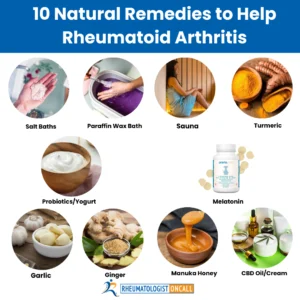SHARE
Roughly 125 million people across the globe have psoriasis. Those with psoriasis are often prone to inflammatory arthritis. Psoriatic arthritis is a chronic condition and a type of arthritis that’s associated with psoriasis. Psoriatic arthritis is present in around 20% of patients with psoriasis.
What are the most common signs of Psoriatic arthritis?
Psoriatic arthritis is often challenging to diagnose as no specific laboratory tests can lead to this diagnosis. Unfortunately, the diagnosis is delayed as patients do not usually report their symptoms when they see their dermatologist as they do not think about the connection between their joint pain and the skin disease. The skin disease is often well controlled, but patients develop joint pain.
Psoriatic arthritis may affect one or multiple joints. Most patients complain of swollen and tender joints, “sausage” fingers (dactylitis), and foot or Achilles tendon inflammation. Some patients may experience upper or lower back pain and, in more advanced stages, even ankylosis of the spine.
What is the treatment of Psoriatic arthritis?
First, it is essential to know there is currently no cure for Psoriatic arthritis. Treatment helps curb the inflammation of the affected area and ease the pain.
Depending on the severity of the condition, experts can suggest different forms of treatment. For example, in mild forms of Psoriatic arthritis, your rheumatologist may choose nonsteroidal antiinflammatory medications (NSAIDs like naproxen, ibuprofen). I strongly recommend using excessive NSAIDs for a prolonged period without a clear indication from your rheumatologist.
Standard disease-modifying antirheumatic drugs (DMARDs, such as methotrexate, leflunomide) and apremilast are recommended for moderate Psoriatic arthritis forms. These drugs can delay the progression of the disease and prevent further damage from excessive inflammation. Unfortunately, there is limited success with DMARDs treatment. Less than a fifth of patients with recently diagnosed Psoriatic arthritis who started using methotrexate monotherapy had minimal disease activity after a year. Reports indicate that there is often a need for more personalized and treat-to-target therapy for people with psoriatic arthritis.
Patients who fail DMARDs therapy need to start using biological agents. There are many classes of biologics that are currently used in Psoriatic arthritis that may target different molecules that can induce inflammation. Here are a few examples: certolizumab (Cimzia), adalimumab (Humira), or ustekinumab (Stelara).
What are the new treatments for Psoriatic arthritis?
In the last couple of years, different drugs have been approved for use in Psoriatic arthritis treatment. Based on the updated guidelines, pharmacologic reports recommend adopting a target-to-target approach, stopping smoking, and prescribing TNF blockers as a first-line treatment. In patients that do not tolerate or fail therapy with TNF -inhibitors, there are other therapies like JAK-inhibitors, IL-17, and IL-12/23 inhibitors.
Here is a list of some of the latest treatments for Psoriatic arthritis.
Tofacitinib/ Xeljanz
The Food and Drug Administration approved Tofacitinib in 2017 to treat patients with psoriatic arthritis. Tofacitinib is a JAK inhibitor that can lessen inflammation and target specific areas of the immune system to curb the overactive response. When TNF inhibitors or conventional DMARDs are insufficient to control inflammation, Tofacitinib (Xeljanz) could help alleviate the symptoms.
Upadacitinib/ Rinvoq
Upadacitinib (Rinvoq) is a novel JAK inhibitor that was initially approved for rheumatoid arthritis. Rinvoq was proven to be effective in trials for psoriatic arthritis with significant improvements in skin signs and joint inflammation. Rinvoq cleared skin psoriasis, lessens the pain in the joints, and restores physical function.
Guselkumab/ Tremfya
Guselkumab (Tremfya) is a selective IL-23 Inhibitor for active Psoriatic arthritis that was used for moderate or severe symptoms. (6) The medication first received Food and Drug Administration approval for treating plaque psoriasis in 2017. In 2020, Tremfya was also approved for patients with active Psoriatic arthritis .
Risankizumab-rzaa/ SKYRIZI
Risankizumab (SKYRIZI®) is an IL-23 inhibitor approved for treating moderate to severe plaque psoriasis. In 2022, Skyrizi was shown to be superior to placebo in patients with skin psoriasis and also active Psoriatic arthritis.
Netakimab
Netakimab works similarly to the currently available IL-17 inhibitors like ixekizumab (Taltz). This drug is still being tested for psoriatic arthritis. Based on a double-blind study, phase -3 clinical trial, Netakinab improved skin and joint disease.
These are some of the most promising treatments for Psoriatic arthritis. Although they can offer numerous beneficial properties, they can also cause side effects. It is essential to consult with a rheumatologist to discuss the risk and benefits of these therapies and if they are appropriate for your case.
This is an educational article that aims to broaden your knowledge, but it does not offer you medical advice. If you have an autoimmune disease, like rheumatoid or psoriatic arthritis, and need help, you are welcome to check out our practice and get the help you need when you need it the most. Rheumatologist OnCall is a telemedicine rheumatology practice that broadens access to a specialist quickly, when needed, and breaks geographical barriers. Check out the states where we are licensed to see patients in the US and reach out to us if needed. We are happy to serve you.













